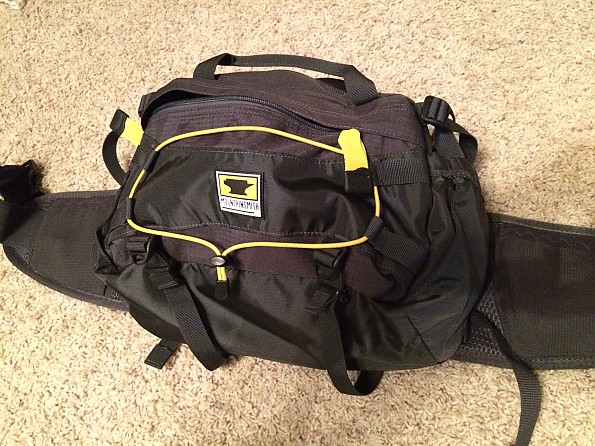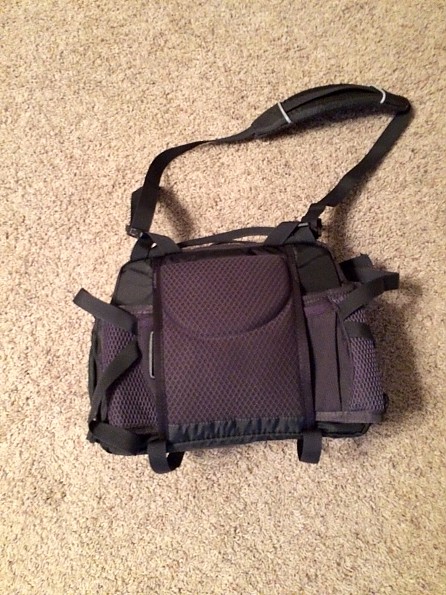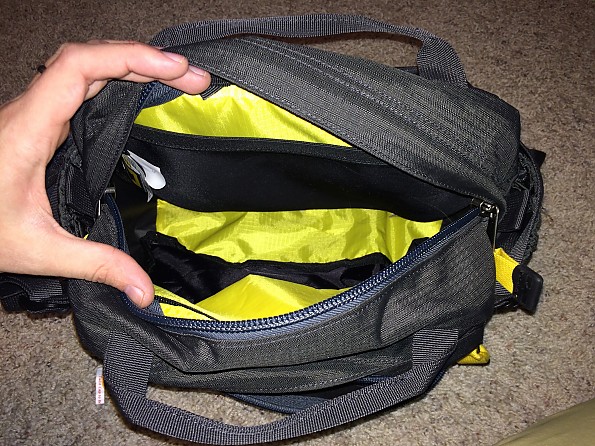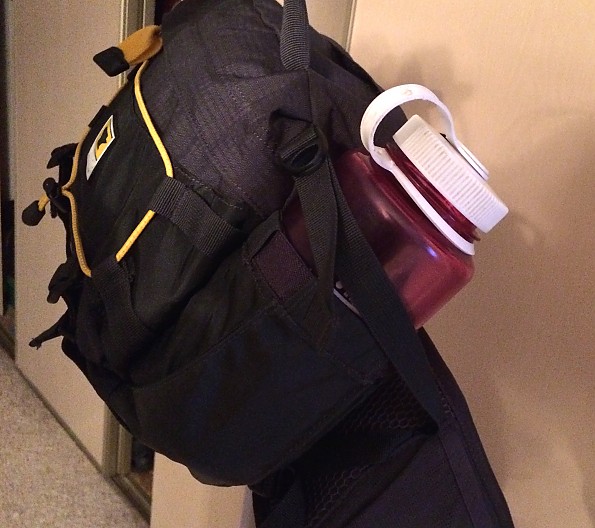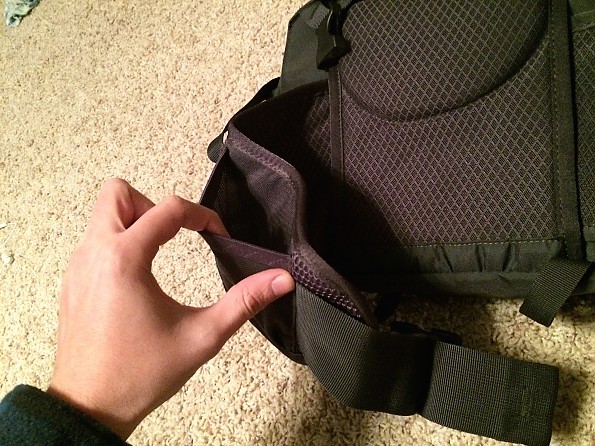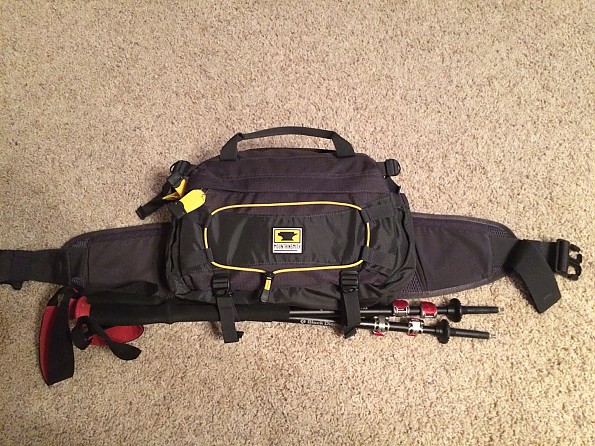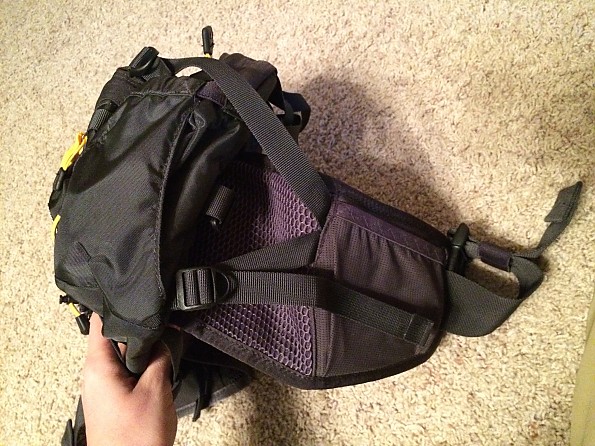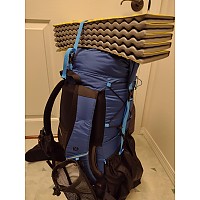Mountainsmith Tour TLS
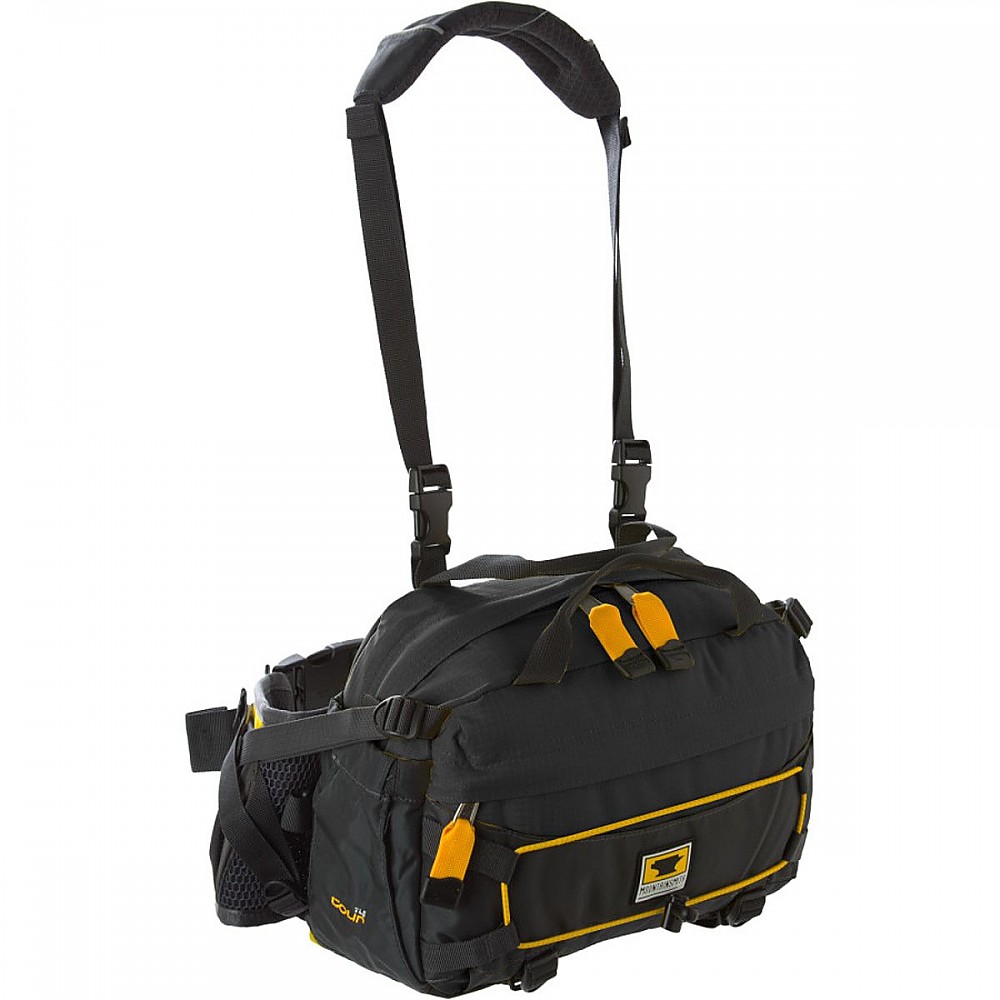
Some people might think a fanny pack will make you look like a nerd. But its durability and comfort make the Mountainsmith Tour TLS pack a great choice for day hikes, cross country skiing, and using as a man-purse (or lady purse) around town.
Pros
- Solid construction, heavy cloth and zippers
- Focuses weight on hips
- Effective compression keeps things stable
- Compartments provide organization options
- I think it looks cool
Cons
- Heavy
- Can sag under the heaviest loads
- Straps are difficult to adjust
- Compartments will drive minimalists crazy
- Most people don't think it looks cool
Fit: This fanny lumbar pack will fit most adults. The heavier you are, the less coverage you'll get from the light padding on the hipbelt. I have a 32 inch waist, and I might get nervous if I was skinnier than a 30 inch waist. Mountainsmith says it will work down to 26 inches. It fits me perfectly, and I have good coverage from the padding.
There is no women's-specific model, but I see no reason why the Tour wouldn't work just fine for women. Since it's a lumbar pack, torso-length isn't important.
The Day TLS pack, which is a couple liters bigger, is so big that it might look like a slumpy normal backpack on a person with a short torso. The Tour isn't too big, so I don't think anyone needs to worry about that.
Comfort: This thing is comfortable to wear. The compression straps keep the load close, so you don't have to strangle your waist with the hipbelt just to get a stable ride. The padding is light and effective, although I could see it wearing down to insignificance over the course of a decade or two. The padding over the lumbar region (lower spine) is generous and comfy.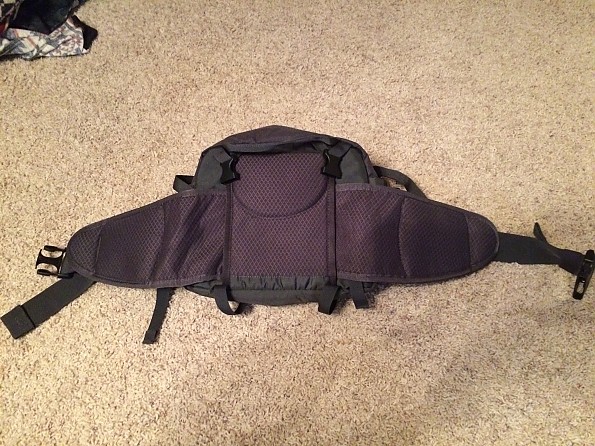
The pack comes with a shoulder strap that's not especially comfortable or practical for using in combination with the hipbelt — it's better when used in man-purse mode, when the hipbelt is tucked in behind the lumbar pad.
Capacity: This is an eight liter bag. It's not big. It has taught me much I tend to overpack, especially when I have room I'm trying to fill. You can fill up the main compartment entirely with a single bulky item (think a heavy fleece like the North Face Denali), so the Tour not be ideal for long winter day hikes.
For an afternoon in the woods or even a day on a fourteener, you'll learn pretty quickly that eight liters is enough. A wind or rain shell will fit inside the main compartment with plenty of room to spare. Extra socks, snacks, the ten essentials — you should have no problem fitting those in this thing.
Organization & Accessibility: This pack is organized into several compartments. The main compartment, closest to your back, has a smaller pocket for essentials like a wallet or phone — things that you absolutely can't afford to lose. I put my keys here as well, even though there's a key clip in the other big compartment.
Also in the main compartment is a padded sleeve for something about the size of an iPad. I thought it was unnecessary at first, but it's grown on me. I now use it for my Kindle or my work iPad. The outer pocket is pretty big, but not as big as the main one. It has the key clip I talked about earlier. I use it for a small swiss army knife.
Outside of the pack, you have the water bottle pockets, small hipbelt pockets, the bungee cord, and the compression straps. I've seen reviews that complain about how tight the water bottle pockets are when you try to put in a Nalgene, but I haven't had any issues. My 32 ounce Naglenes fit just fine.
The hipbelt pockets are small and good only for small items.
The bungee cord on the outside of the pack is useful and surprisingly secure with certain loads. Finally, the compression straps on the bottom of the pack can be used to carry things, like trekking poles. I don't really recommend this — it's just awkward.
Ride: Like I said before, the compression straps on the Tour keep the load close. The Tour is stable in practically all conditions. Downhill skiing, scrambling up a talus slope, whenever you need stability - it doesn't flop around.
The Tour's capacity, water bottle pockets, padded hipbelt, and smart stabilizing straps mean that you can carry more than you would in a lesser fanny pack. You still need to watch your weight! You might start to notice some sagging with the heaviest loads — say, three quarts of water and a couple of boxes of ammunition.
Another thing - I'm not sure how high on the waist this thing is intended to ride. People with the strapettes sometimes complain that they're too short, which seems to indicate that the pack is meant to ride kind of high. I would just go with whatever feels comfortable.
Compression: The really valuable compression straps are the ones connecting the sides of the pack to the hipbelt. They lock the load right into your hips, and they set this pack apart from other lumbar designs. The other straps on the bag seem like they're geared towards securing extra items rather than compressing the bag. I don't worry about compression. Instead, I fill the bag from the pocket closest to my back outwards.
Along with the other straps on the bag, including the hipbelt, I've had a problem with tightening them. They can be really sticky. This is great when you don't want things to loosen up, so I try to look at it as a good thing. But it can still get pretty annoying.
Construction & Durability: Strong nylon, beefy zippers. Not exactly what I want on a thru-hiking backpack, but ideal for an item that sees daily use. You can find people who've had these packs for two decades, and they're still going strong. I think the quality is still very high, even on these newer models.
Conditions: I use this pack for summer day hikes when I don't need to bring much. This might be a short hike in the desert or a full day in the woods. I bring a traditional pack if I need to bring more than two quarts of water or if I'm carrying an ice axe.
This has also been a great choice for snowshoeing and cross-country skiing in managed areas, like a groomed nordic center. I also wear it downhill skiing, and I think it's just about the perfect size for a day in-bounds when you know you won't be carrying your skis. I also use this pack for small game hunting and fishing, when I like having the things I need easily accessible at my waist.
Conclusion: I think there was a time when these lumbar packs were your only choice if you wanted to carry the load for a day hike on your hips instead of your shoulders. Times have changed somewhat, and there are several good quality, small packs that have structure and hip belts to keep the weight on your hips. Still, the Tour is secure and cozy on the waist in a way that I've never experienced with a traditional day pack.
The limitations are obvious, however. No ski carry. No ice tool carry. Once you grab the strapettes, you might start to wonder why you aren't just using a normal backpack. And of course, nine out of ten people will think you look like a dweeb. The other one person will also be carrying a Mountainsmith Tour.
This obviously isn't a do-everything pack, but I like it. I like its durability and comfort. I like the gray color! For about ninety percent of my day hikes, this is the pack I will choose.
Source: bought it new
Price Paid: $60
Your Review
Where to Buy
You May Like
The Tour TLS replaced the Mountainsmith Tour.
Specs
| Price |
Historic Range: $36.93-$74.95 Reviewers Paid: $60.00 |


